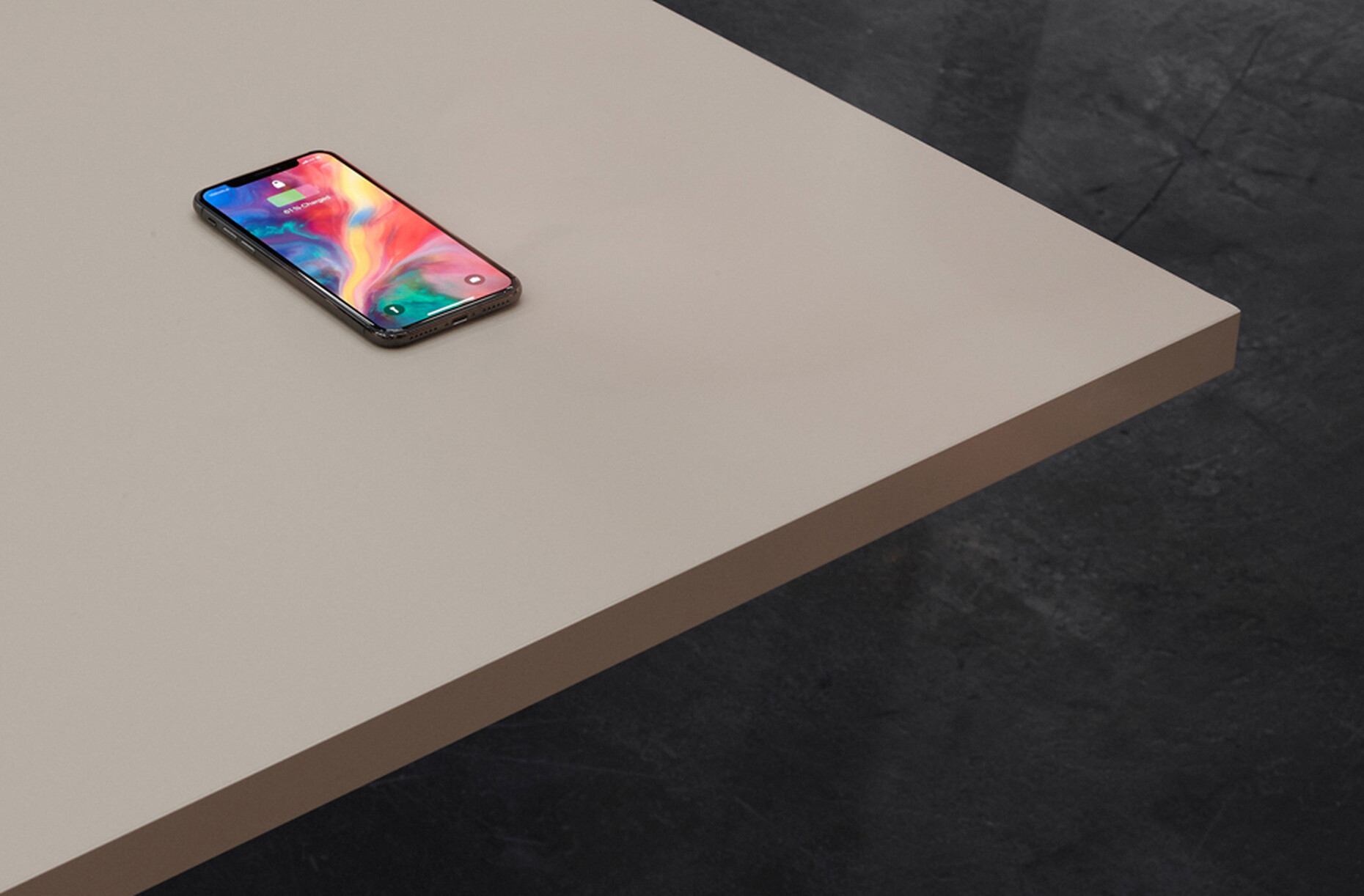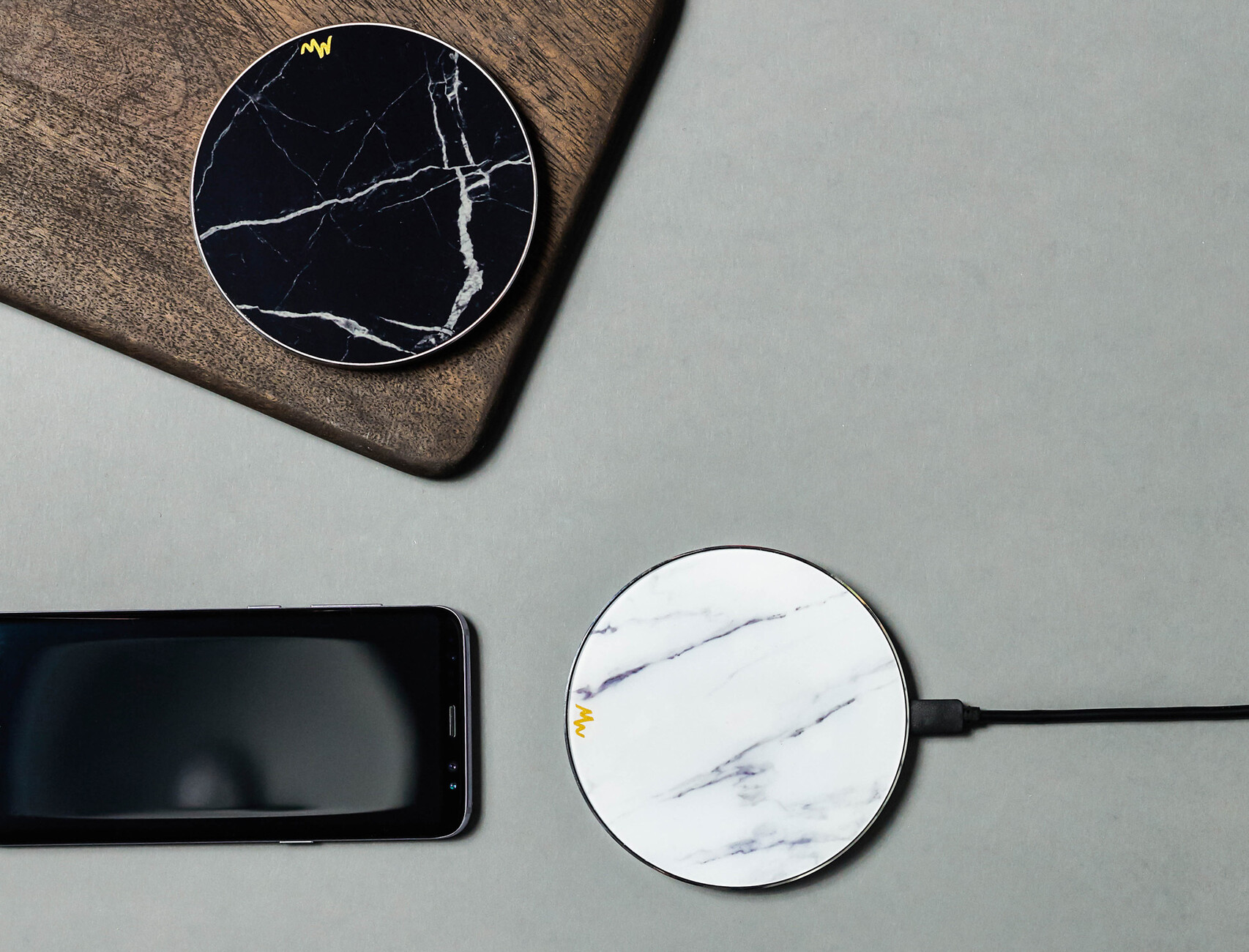Wireless and happy
What is peeping out from under the bed? A charger cable! And on the worktop between the kitchen sponge and chopping board there is another one. The intertwined wires on the coffee table look especially attractive. And a daily frustration at your workplace: tangled wires. Often moaned about, but never really solved, electrical cabling is an integral part of our everyday lives that is as ugly as it is necessary. But now we can finally cut the tethers to our electronic devices thanks to wireless electricity transmission. The requisite technology has been around a long time (just think of electric toothbrushes), but it is only with Apple’s recent presentation of phones that can be charged wirelessly using magnetic induction that the topic has really taken off. The standard used by Apple is also the most widely used method, and now all the major appliance manufacturers are equipping their products with technology based on the so-called Qi standard. As users we are unaccustomed to so much compatibility. It seems hard to believe that in a few years’ time the drama of having forgotten your charger will be no more than an amusing anecdote told to friends. There will be charging points everywhere – at the airport, in cafés and hotels. There is one slight drawback to this technology, though: You can’t phone while charging, as electricity transmission via induction only works over short distances.
Now all you need are charging stations to supply your cell phone with electricity. Simple charging pads can be had for less than 20 euros. But if the small round plastic mats are too crude for your liking, try the sleeker versions made of cork, wood, aluminum, fabric or even marble. After all, these items are likely to become part of your home furnishings and a black plastic UFO looks somewhat out of place in a would-be cozy living room. But there certainly is something to suit every taste. That said, the charging pads are really just a transitional product; after all, in terms of functionality they are not far removed from the conventional cable and plug. One device is simply replaced by another. Some designers and manufacturers have already taken the idea a step further however, and are integrating charging functions into everyday items and furniture. An elegant solution, because the technology remains invisible and charging just becomes part of the daily routine. Put your phone down and it starts charging.
Inductive accessory
Incidentally, it was Ikea that pioneered the idea. Indeed, the Swedes have been offering home products with integrated charging for some time now. A particularly meaningful solution is the desk lamp with wireless charging in its base. After all, luminaires are connected to the electricity supply anyhow, and when you are working your cell phone tends to lie somewhere on your desk. It makes just as much sense to integrate the Qi wireless charging pad in the base of a computer display, as in the latest model by Asus. Wireless charging can equally be combined with desk accessories, as the recent concepts of various design agencies demonstrate. Bowls, trays, beakers for those odd bits and pieces, or even the good-old table clock provide additional charging capacity for a cell phone – as well as for other energy-draining items like portable speakers and rechargeable batteries or fans. London-based firm Fonesalesman has just launched a portable speaker that, when hooked up to the electricity supply, can also double as a wireless charging device. We are seeing new, hybrid typologies, whose possibilities have surely not yet been fully exploited. Klaus Böckmann, Product Manager for the brand Evoline, is already thinking ahead: “Potentially, we have a huge field of application,” he says. “At the moment Qi technology is largely restricted to mobile end devices like smartphones and wearables, but ideas have already surfaced for supplying entire desks inductively. Maybe in future wireless household appliances will simply be placed on a worktop, too.” But cables or even power outlets would not completely disappear, no matter how widespread inductive charging becomes, argues Böckmann. “After all, inductive charging stations still have to be supplied with energy.”
It is likely to take some time until entire surfaces are electrified. For the time being we will have to be content with wireless charging furniture. But the range of available products is on the increase: Berlin label New Tendency, for instance, has begun selling its table system “Masa” with an inductive charging function. And under the name “Furniqi,” Fonesalesman is marketing a classic, four-legged bamboo side table whose charging area is indicated by a ring engraved in its top. Other interior brands are sure to follow suit. And those who don’t feel like waiting can, of course, electrify their furniture themselves. Even brief Internet research generates masses of DIY instructions. The Qi modules required are sold by various manufacturers, and Evoline also offers the “Evoline Charger Qi” for under-table mounting. All that it takes to be wireless and happy is a little skill in DIY.











